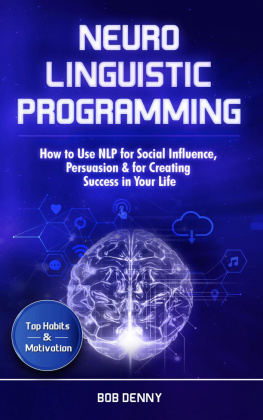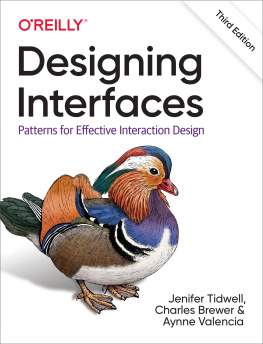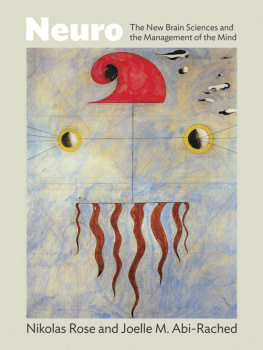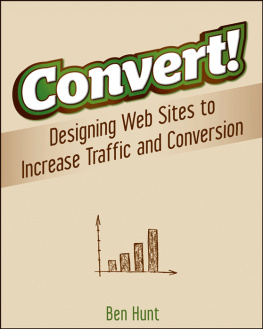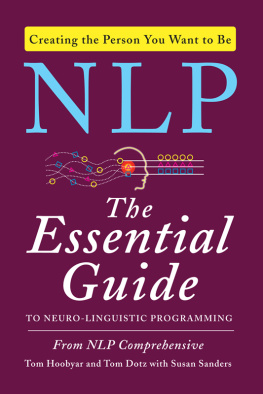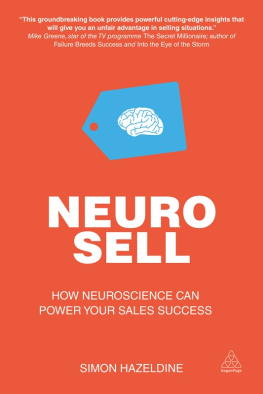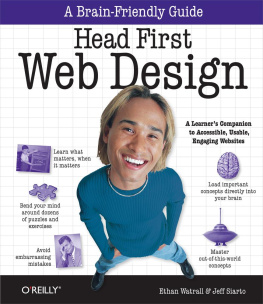Neuro Web Design
What Makes Them Click?
Susan M. Weinschenk, Ph.D.
NEURO WEB DESIGN
SUSAN M. WEINSCHENK, PH.D.
New Riders
1249 Eighth Street
Berkeley, CA 94710
510/524-2178
510/524-2221 (fax)
Find us on the Web at: www.newriders.com
To report errors, please send a note to
New Riders is an imprint of Peachpit, a division of Pearson Education.
Copyright 2009 by Susan Weinschenk, Ph.D.
PROJECT EDITOR: Michael J. Nolan
DEVELOPMENT EDITOR: Jeff Riley
PRODUCTION EDITOR: Tracey Croom
COPY EDITOR: Marta Justak
PROOFREADER: Darren Meiss
INDEXER: Joy Dean Lee
COVER DESIGN: RHDG
INTERIOR DESIGN: Chrils Gillespie, Happenstance Type-O-Rama
Notice of Rights
All rights reserved. No part of this book may be reproduced or transmitted in any form by any means, electronic, mechanical, photocopying, recording, or otherwise, without the prior written permission of the publisher. For information on getting permission for reprints and excerpts, contact .
Notice of Liability
The information in this book is distributed on an As Is basis without warranty. While every precaution has been taken in the preparation of the book, neither the author nor Peachpit shall have any liability to any person or entity with respect to any loss or damage caused or alleged to be caused directly or indirectly by the instructions contained in this book or by the computer software and hardware products described in it.
Trademarks
Many of the designations used by manufacturers and sellers to distinguish their products are claimed as trademarks. Where those designations appear in this book, and Peachpit was aware of a trademark claim, the designations appear as requested by the owner of the trademark. All other product names and services identified throughout this book are used in editorial fashion only and for the benefit of such companies with no intention of infringement of the trademark. No such use, or the use of any trade name, is intended to convey endorsement or other affiliation with this book.
ISBN 13: 978-0-321-60360-9
ISBN 10: 0-321-60360-5
9 8 7 6 5 4 3 2 1
Printed and bound in the United States of America
For my great family who gives me love and support: Peter, Maisie, and Guthrie.
Contents
Acknowledgements
I RECEIVED GREAT help and advice from the whole group at Peachpit Press, including Michael Nolan, who helped me form the idea of the book and shepherd it through Peachpit; and Jeff Riley, my development editor, whose sense of humor via email at midnight gave me the little bit more energy I needed during late-night editing sessions.
Thank you also to Guthrie Weinschenk and Maisie Weinschenk for their help with several photos that are in the book, and thank you to David Mitropoulos-Rundus for his unflagging encouragement and support.
About the Author
DR. SUSAN WEINSCHENK has a Ph.D. in Psychology and a career since 1979 applying what we know about people to the design of technology. She is a speaker, teacher, mentor, and consultant to business clients worldwide. Susan writes a blog on Neuro Web Design at www.whatmakesthemclick.blogspot.com and maintains the www.neurowebbook.com Web site. She has two children and lives with her husband in Wisconsin.
1
Designing Web Sites for Persuasion and the Unconscious Mind
ON A RECENT VACATION, you broke your digital camera. Now you have to buy a new one. Youd only had the old one for six months and hadnt even learned to use all the features. You liked the camera you had, but maybe there are better or cheaper ones now? Maybe you dont need all those features that you hadnt used in six months. You go online to check out cameras. Which Web site will you go to? Why did you choose that Web site? Will you go to more than one Web site? Will you buy it online after all? Which camera will you choose? How will you make that decision?
We think that we are reasonable, rational people and that our decisions are made by careful thinking. But the reality is that the Web site we pick, what we decide to do while there, and whether we buy or not are decisions and actions that we make in a largely unconscious way. Although some part of our decisions on which camera to buy, and where to buy it from, might come from the rational part of our brain, many of our decisions and actions are based on emotion, and many are based on automatic triggers that we react to from something we see on the Web site. Some (even most) of our actions are initiated from parts of our brain that we dont have conscious access to. Many of our decisions, reactions, and behaviors are governed by mental processes of which we are not even aware.
Over the past 100 years, neuroscientists and neuropsychologists have been studying the human brain to understand how it works and why we do the things we do. And over the past 10 years, new technologies of brain scanning have allowed these researchers to verify what their previous research had hinted at. There are now answers to these questions: What are the parts of the brain that govern our behavior? Which parts of our brain will be active when we make our decision about the camera?
The brain is complex, and Im not going to attempt to teach you all about brain science in this book. But I am going to explain some of what neuroscientists know about the brain, connect that knowledge to our everyday behavior, and connect it especially to our everyday behavior on the Internet.
Your Web experiences are highly influenced by unconscious thoughts and actions that are controlled by various parts of your brain.
Youre So Smart You Have Three Brains
WE OFTEN TALK about the human brain as if it were one large amorphous part of our body, but there are distinct parts of the brain that have distinct functions. In this book Im going to simplify it all by referring to three different brains:
The old brain
The mid brain
The new brain
The old brain gets its name from the idea that it developed first in the evolutionary history of animals. The old brain is concerned with our survival. The old brain is constantly looking at the environment around us, deciding what is safe and what isnt. Its also the part of our brain that takes care of things automatically, such as digestion, movement, and breathing.
The mid brain is where emotions are processed. Its what causes you to feel things, and its the root of a lot of your impulse buying.
The new brain, or cortex, is the most recent structure identified (from an evolutionary standpoint). Language processing, speech, reading, playing music, listening to music, thinking thoughts, planningthese are all done with the new brain. Its your new brain that is reading this book.


